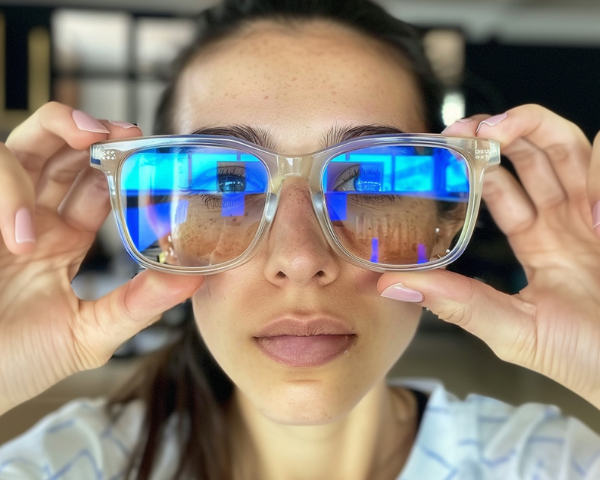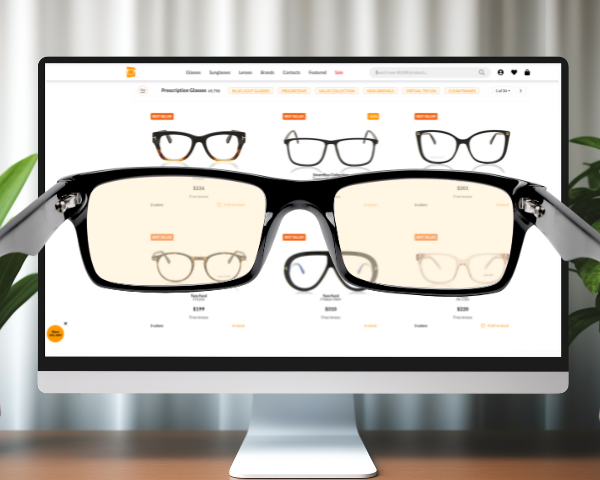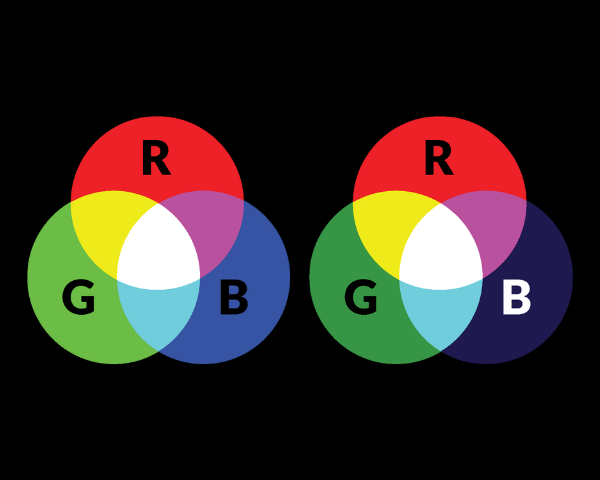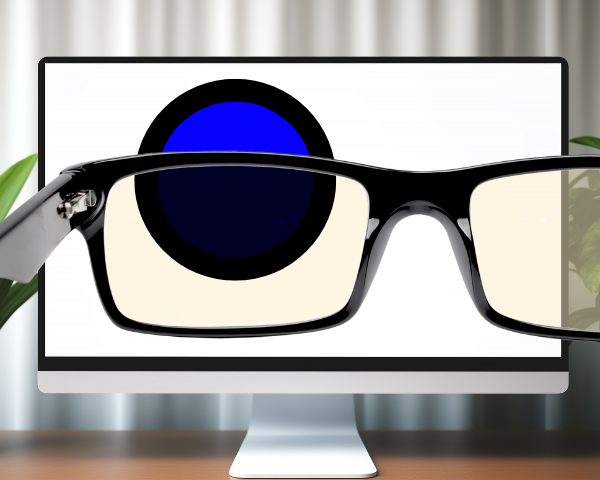What is Rimless Glasses - Everything You Need to Know

Reviewed by
Sharlene McKeeman FBDO
We know the endless choices of frames are overwhelming, so why not make it easier and try a pair of rimless glasses? This article will cover what rimless glasses are and what you need to know before buying your first pair. Discover the pros and cons of wearing rimless glasses and whether they are an affordable alternative to prescription glasses for you.
What are rimless glasses?
Rimless glasses, or frameless eyeglasses, are glasses with no frame. The nose bridge connects the lenses, and the temples are directly attached to the lenses. In the late 19th and early 20th centuries, the first widely available version of rimless glasses came as prince-nez. These glasses pinched the nose and didn’t have earpieces. Manufacturers went to a great extent to keep these glasses secure on the nose. Around World War 1, a version with two temple arms and a nose bridge emerged.
In the coming decades, various other structural improvements were implemented, including nose pads, changing the type of screws, and different style variations. Rimless glasses help bring more focus to your face and allow for a subtle look. In the 21st century, frameless glasses are usually made with quality, lightweight, and durable materials, such as titanium, as they are more delicate than standard glasses.
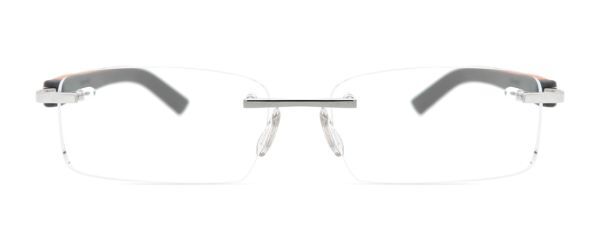
What are the pros and cons of rimless glasses?
Like any pair of glasses, rimless glasses have features that appeal to some people rather than others. Let’s look into why rimless glasses may or may not be for you.
What are the advantages of rimless eyeglasses?
- Cost-effective
- Subtle – nearly invisible on your face
- Lightweight
- You can look fashionable, professional, or casual, depending on the model
What are the disadvantages of rimless glasses?
- Delicate and more prone to breakage since there’s no frame
- Not for those who want their glasses to show off their vibrant personalities
- Not available in all frames styles
- Not available for all prescription lenses (see next paragraph)
Consider the pros and cons to decide whether rimless eyeglasses are for you. If you like them and need prescription lenses, then let’s find out if frameless eyeglasses are suitable for your vision.
Can I get rimless glasses with a high prescription?
Prescription rimless eyeglasses are not suitable for high prescriptions. Indeed, it is not recommended to wear your frameless glasses if your prescription is higher than -6.00. Strong prescriptions have thicker lenses and need extra support, like semi-rimeless and full-rim glasses in plastic or metal frames. However, depending on the lens material and your prescription details, you might get away with frameless glasses, even with a high index. Consult our certified online opticians for more advice.
Progressive lenses can be fitted to a rimless pair of glasses and work as effectively as other progressive prescription glasses (always depending on your prescription). The same goes for tinted lenses and transitions. You should have a regular eye test to have an updated version of your prescription. If you are unsure what your existing prescription is before buying a pair of rimless glasses, you can use our Lens Scanner tool and get the result straight to your phone.
Best lens material for rimless glasses
The lenses in frameless eyeglasses are more exposed than full or semi-rimmed glasses, so they’re more prone to breakage. Therefore, rimless glasses depend on certain types of lens materials.
Standard plastic or glass lenses work best with full-rimmed glasses as they are fully covered. The lenses are more exposed in rimless glasses, and with glass or standard plastic lenses, they’d lack impact resistance. So, frameless eyeglasses depend on the quality and robust lens materials, and with high prescriptions, thicker lenses require more stability.
High-quality plastic lenses, like Arise Collective™ Clarity Lenses are a good option for frameless glasses with low prescriptions. They are lighter and thinner than standard glasses lenses and also offer UV protection and impact resistance. Higher prescriptions may require thicker lenses, which mean a heavier pair of glasses. High-index lenses are a great way to avoid heavy rimless glasses since they offer superior impact resistance.
DID YOU KNOW?
The best lens material for rimless glasses is high-quality plastic, such as our Arise Collective™ Clarity Lenses . With higher prescriptions, it is recommended to opt for high-index lenses for superior impact resistance and comfort.
How much do rimless glasses cost?
One of the pros of rimless eyewear is that it is cost-effective, so you won’t need to exceed your budget.
You can find affordable rimless glasses and designer eyewear to suit your every eye need and personal style. If you love durable sporty glasses, try Oakley rimless glasses, or discover our Arise Collective for something more eco-chic.
How to adjust rimless glasses
Rimless glasses need extra delicacy when it comes to small repairings. To adjust loose screws, remove them from the frames, insert a new screw, and tighten them with a jeweller’s screwdriver. Tighten it up to the point where it becomes difficult to turn to avoid cracking the lens where the hinge and lens meet.
You can also slightly adjust the nose pads to make the glasses sit higher or lower on your face. Be careful when doing this with rimless progressive glasses, as they may alter your vision while wearing them. Undoubtedly, it’s always best to visit your local opticians for assistance.
Alternatives to rimless glasses
So, what are rimless glasses? Imagine a pair of prescription glasses without a frame, just the lenses, nose bridge, and temples.
After reading our article, you should have a better understanding of why some people prefer to wear rimless glasses and may want to try them yourself. Remember to take extra care of frameless glasses, as the lenses do not have the additional support full or semi-rimmed glasses may offer.
If you’ve decided that rimless glasses are not the best option for your needs, you may want to explore different types of glasses to find what you love among trendy and practical everyday eyewear.

















































